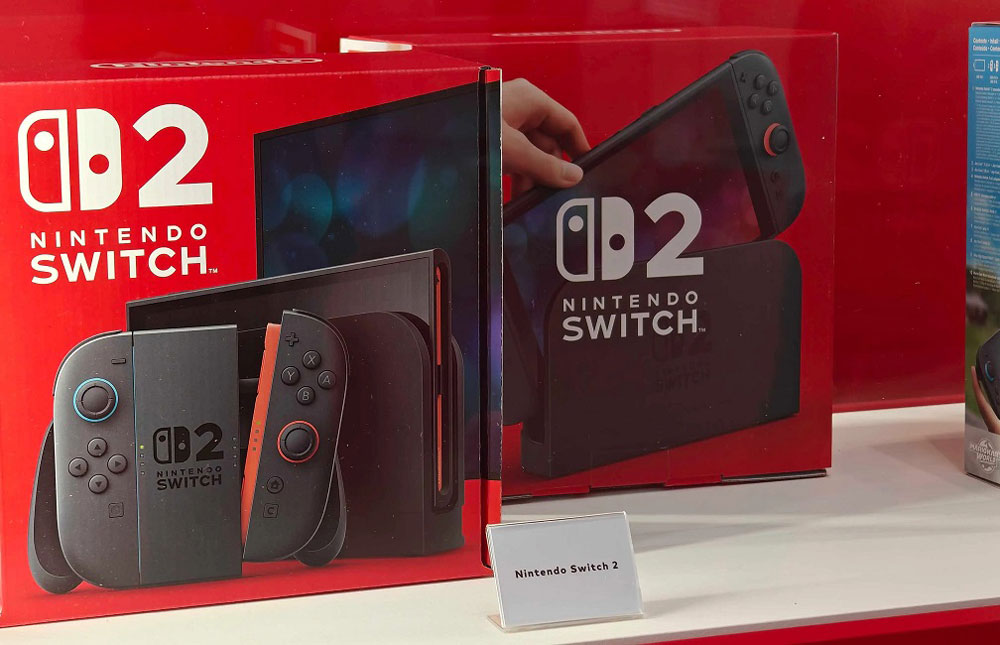Nintendo has announced its first sales forecast for the highly anticipated Switch 2 console, predicting 15 million units sold in the fiscal year ending March 2026. The successor to the wildly popular Switch is set to hit shelves in June, with a starting price of $449.99 in the U.S.
This forecast comes at a pivotal moment for the Japanese gaming giant, as revenue and profit for its fourth quarter took a notable hit. The drop was largely expected as fans held off on purchasing the current-generation Switch in anticipation of the new console.
Fourth-Quarter Financial Performance
Nintendo revealed revenue of 208.7 billion yen ($1.45 billion) for its fiscal fourth quarter, falling short of analysts’ expectations of 216.16 billion yen. Net profit for the period, however, beat estimates, coming in at 41.6 billion yen, compared to the forecasted 33.91 billion yen. Despite this, revenue declined by 24.7% year-over-year, while profit plunged nearly 50%.
For the full fiscal year, Nintendo sold 10.8 million units of the original Switch, just missing its revised forecast of 11 million units. This marked a 31% decrease in sales year-over-year, reflecting the aging hardware’s waning momentum.
Switch 2: Positioned for a Strong Start
The Switch 2 is expected to build on the success of its predecessor, which became Nintendo’s second-best-selling console with over 150 million units sold since its 2017 debut. Market research firm Omdia predicts that Nintendo will sell 14.7 million Switch 2 units in 2025 alone — around 10% ahead of the original Switch’s first-year performance.
“Switch 2 will launch into a stronger position than its predecessor, with over 100 million active Switch users providing a strong foundation for adoption,” said George Jijiashvili, senior principal analyst at Omdia.
The console will launch alongside two new titles: “Mario Kart World” and “Nintendo Switch 2 Welcome Tour”, as well as updated versions of existing hits like “Zelda: Breath of the Wild.” Nintendo’s reliance on its iconic franchises — including Mario, Zelda, and Pokémon — is expected to fuel early demand.
Challenges on the Horizon
Despite the optimistic sales forecast, Nintendo faces potential challenges tied to global trade tariffs. The company manufactures its consoles in Vietnam, which could face 46% U.S. import duties if current tariff pauses are lifted. Nintendo President Shuntaro Furukawa acknowledged that additional tariffs could force the company to adjust pricing, which might dampen demand in the critical U.S. market.
“If Nintendo needed to raise prices by $100 or more, all bets would be off,” said Serkan Toto, CEO of Tokyo-based consultancy Kantan Games. “The company would be under enormous pressure in the all-important U.S. market.”
Investor Sentiment and Future Outlook
Despite uncertainties, investors remain optimistic about the Switch 2’s potential. Nintendo’s stock has surged around 30% this year and 64% over the past 12 months, reflecting confidence in the company’s strategy to extend its gaming empire. Alongside hardware sales, Nintendo is targeting 45 million units of software sales for the Switch 2 in the fiscal year ending March 2026, underscoring the importance of game releases to its overall success.
With its blend of upgraded features, a loyal fan base, and a strong lineup of games, the Switch 2 is poised to make an impactful debut. However, the true test will lie in how Nintendo navigates the dual pressures of global trade dynamics and consumer expectations in an increasingly competitive gaming market.











